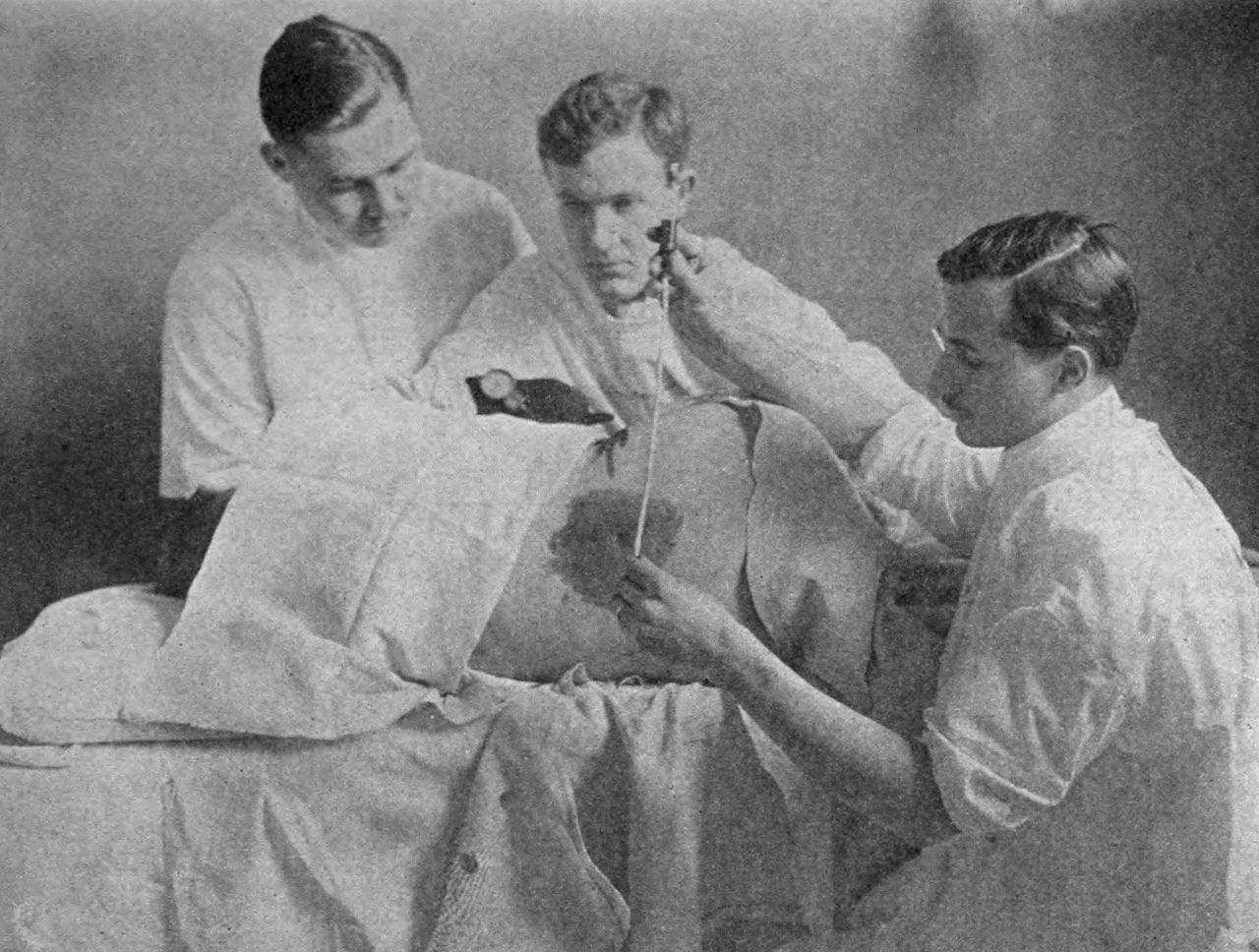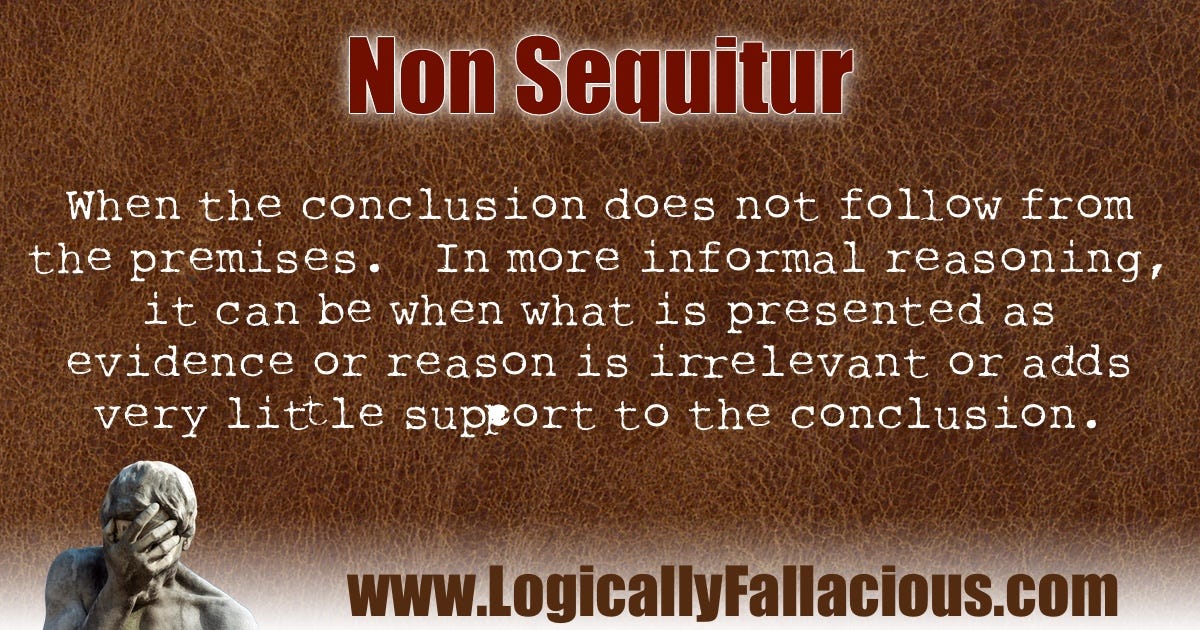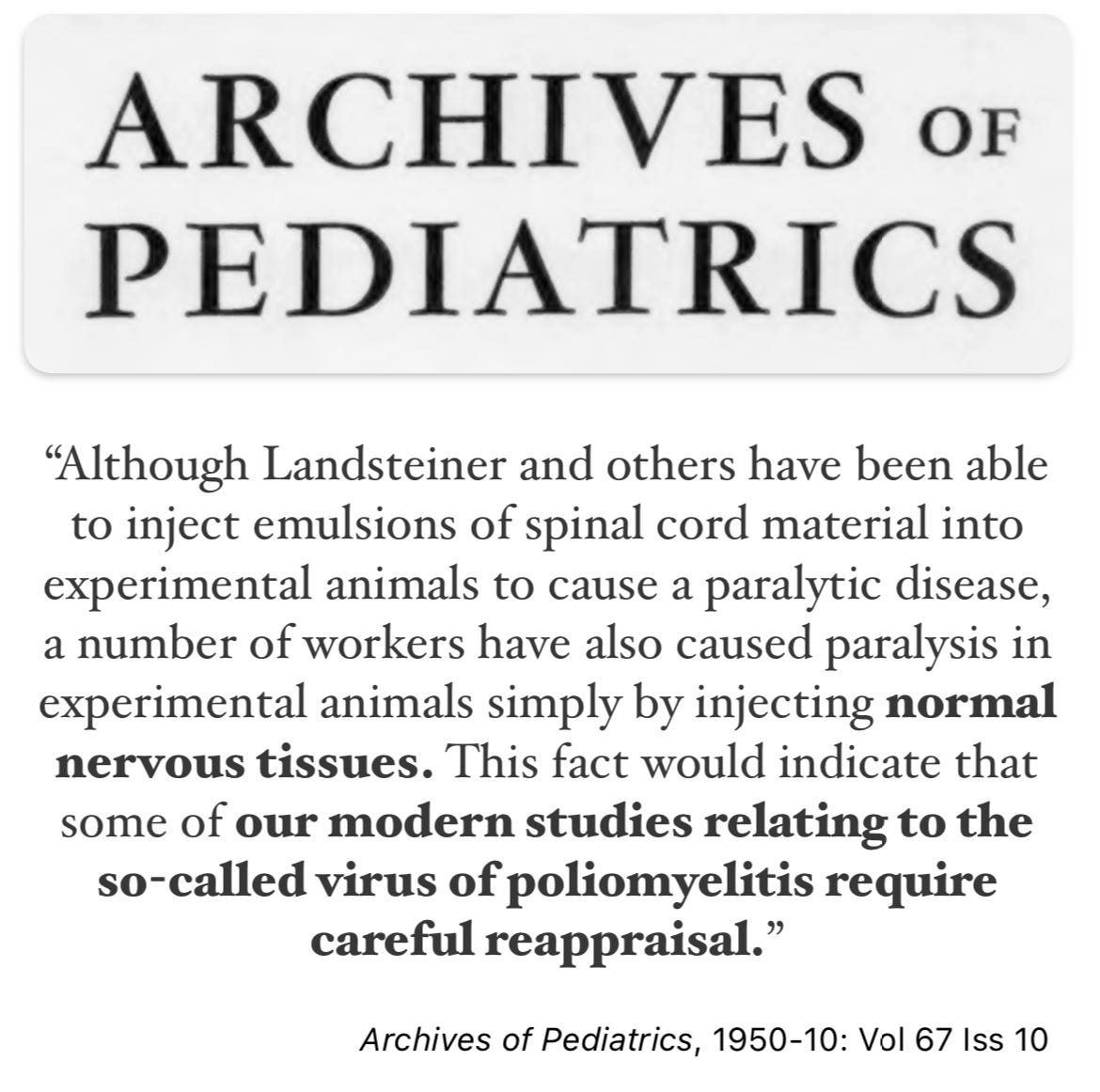The Flawed Non-Specificity of Polio Diagnostics
Diagnosis: Polio?
“Poliomyelitis is in fact, as will be shown, a collective name for a symptom complex which is produced under different circumstances by different causes.”
In his 1938 article entitled Poliomyelitis: Facts and Fallacies, epidemiologist and public health administrator Leslie Lumsden acknowledged that doctors and researcher didn’t know if polio was a distinct and specific disease entity.
“We are not sure whether what we call poliomyelitis is one disease or a group of two or more diseases.”
He states that a diagnosis was often uncertain and erroneous.
“The diagnosis of the disease as it is designated and reported is often uncertain and frequently erroneous.”
In the great polio epidemic of 1916, it was stated that almost every child who became ill during that summer was diagnosed with polio.
“We have not yet any specific method for diagnosis of poliomyelitis. Many other clinical conditions, especially in children, are confounded with it. In times of outbreaks, attended with much publicity, cases of other diseases often in some localities are reported as poliomyelitis. It is even stated “authoritatively” that in New York City during the epidemic of 1916 “one would not have been far wrong to have considered that every child who fell ill during that fateful summer had poliomyelitis.”
Dr. Ralph Scobey, professor of clinical pediatrics and president of a poliomyelitis research institute in New York, outlined the problems with polio diagnosis a 1953 article. He describes how a diagnosis was based upon the physicians judgement, and not on laboratory tests.
“The diagnosis of poliomyelitis is often very difficult and hazardous. Reports of the disease are often uncertain and frequently erroneous. Diagnosis is not based upon specific, critical tests, but usually upon the physician’s judgement. During epidemics of poliomyelitis as many as fifty different diseases have been called “poliomyelitis” and patients have been sent to contagious disease hospitals where the diseases were sorted out … Virus recovery tests are expensive, require time, are clinically impractical, and are carried out, therefore, in an insignificant number of cases of poliomyelitis during epidemics of that disease.”
In his book book entitled Paralysed with Fear: The Story of Polio, Gareth Williams describes the difficulty in polio diagnostics. Many other diseases were ‘misdiagnosed’ as polio.
“Before reliable laboratory tests became widely available, it was surprisingly common for polio to be mislabelled as something else, and vice versa. In 1944, Donald Johnstone, the superintendent of the Isolation Hospital in Plymouth, complained that many polio cases were misdiagnosed as brain tumours, multiple sclerosis or ‘drunkard’s palsy’ … Conversely, of 104 cases of suspected polio admitted to the Middlesex Hospital in London’s West End during the great epidemic of 1947, 44 turned out to have other diseases, including bacterial meningitis and glandular fever.”
Lumbar puncture
Gareth Williams outlines how polio was diagnosed; which was primarly on clinical grounds. The cerebrospinal fluid was often examined for signs of disturbance.
“Until the 1950s, polio was diagnosed by the doctor’s clinical impression, supplemented by some rudimentary investigations. Lumbar puncture (spinal tap) was part of the ritual of hospital admission with suspected polio, uncomfortable if it went smoothly and agony if the needle went a few millimetres off course. The purpose is to sample the spinal fluid, known more accurately as ‘cerebrospinal fluid’ (CSF), as it bathes the outside and inside of the brain as well as the spinal cord. A lumbar puncture is done by pushing a fine needle into the middle of the back, between the spines of the third and fourth lumbar vertebrae.”
However, the findings in the cerebrospinal fluid by the lumbar puncture are non-specific, as indicated by the CDC:
“These findings are nonspecific and may result from a variety of infectious and noninfectious conditions.”
In his 1953 article, Dr. Ralph Scobey states that polio was diagnosed with the help of spinal fluid cell counts. An elevated cell count (pleocytosis) would indicate a polio diagnosis. However, around 10% of polio cases had normal spinal fluid cell counts. Scobey also points out the previously mentioned fact that the spinal fluid results are non-specific.
“In the vast majority of cases of poliomyelitis, the criteria for diagnosis has depended almost entirely on the presence of an epidemic of the disease, neurological signs and the presence of a pleocytosis. However, ten per cent or more of the cases of poliomyelitis that are reported have normal spinal fluid cell counts and pleocytosis can occur, together with neurological signs, in conditions other than infectious diseases. In the so-called abortive cases of poliomyelitis, there are no characteristic signs and the spinal fluid is usually normal; the diagnosis is made merely by implication.”
Case definition
In their 1953 document, the World Health Organization outlined the case definition of polio used.
“(b) Spinal paralytic poliomyelitis
Signs and symptoms of non-paralytic poliomyelitis with the addition of partial or complete paralysis of one or more muscle groups, detected on two examinations at least 24 hours apart.”
Note, this case definition is non-specific, which means that any kind of illness with the signs and symptoms corresponding with the description could have been declared as a polio victim.
In 1960, the biostatistician Bernard Greenberg made a remark upon this case definition:
“Prior to 1954 any physician who reported paralytic poliomyelitis was doing his patient a service by way of subsidizing the cost of hospitalization and was being community-minded in reporting a communicable disease. The criterion of diagnosis at that time in most health departments followed the World Health Organization definition: “Spinal paralytic poliomyelitis; sign and symptoms of nonparalytic poliomyelitis with the addition of partial or complete paralysis of one or more muscle groups, detected on two examinations at least 24 hours apart.” Note that “two examinations at least 24 hours apart” was all that was required. Laboratory confirmation and presence of residual paralysis was not required.”
Although laboratory tests were available, they were not used in the vast majority of cases. This fact is described by Dr. Ralph Scobey in 1954:
“Attempts to isolate the virus from the excretions were carried out in little more than one per cent. In the remaining 99 per cent, a virus was merely assumed to have been present. That the paralysis in this large group might have had many causes is obvious.”
[…]
“Bell, epidemiologist, National Institutes of Health, states that the isolation of a virus from poliomyelitis patients is not a routine or reportable procedure; it is carried out only in conjunction with research studies. Serological tests of acute and convalescent blood specimens, he says, are often of no value for determining the cause of the current infection in poliomyelitis.”
Even the alleged detection of a polio ‘virus’ in patients with the disease did not establish a diagnosis, as a positive test result was widely found in normal healthy people.
“Korns (1953), N. Y. State Public Health Officer, states that the isolation of the poliomyelitis virus for diagnostic purposes is almost never done and is of little practical value, while at the same time being a very difficult procedure. He points out further that isolation of the poliomyelitis virus from the patient by no means establishes the diagnosis since the virus is widely prevalent in the population during epidemic periods without producing disease.”
Dr. Scobey describes that in many cases where a polio diagnosis was made with certainty, “virus” recovery tests were negative.
“Inconclusive evidence of a virus etiology in all cases of poliomyelitis is demonstrated by other facts. For example, in many cases where the diagnosis is made with certainty, virus recovery tests have proved to be negative. Even in fatal cases, it has not been possible in some cases to demonstrate a virus in the feces or in the spinal cord.”
Virus isolation
One might ask how the purported virus was actually ‘detected’ and ‘isolated’?
In the previously mentioned book by Gareth Williams, one can read that it was through the “irreversible use of many monkeys”.
“As late as the 1950s, proving that the poliovirus was responsible for a patient’s illness took several days and required the irreversible use of many monkeys. In 1947, Dr Douglas McAlpine of the Middlesex Hospital, London, expressed regret that ‘facilities in this country for this type of work are at present extremely limited’. By the time the results came through, most patients were either on the mend, in the lifesaving embrace of the iron lung or in transit to or from the post-mortem room.”

This can be verified by a 1953 article published in the The New England Journal of Medicine by Dr. Thomas Weller, who states that the only way to “isolate” polio viruses were through inoculation of monkeys.
“Until recently, inoculation of monkeys has remained the only means of isolating these viruses, and the production in the monkey of the characteristic myelitis with anterior-horn-cell degeneration has been the criterion for the identification of this group of agents.”
So how was the alleged polio virus “isolated”?
They relied on indirect and non-specific effects observed in uncontrolled monkey inoculation experiments
However, such methodology does not reflect the description of words “isolation” and “virus.”
A major issue is that the experimental methods themselves have been shown to produce the effect — no hypothetical pathogen required.
In a 1950 article published in the journal Archives of Pediatrics, it is reported that paralysis in experimental animals occurred simply by injecting normal tissue.
“Although Landsteiner and others have been able to inject emulsions of spinal cord material into experimental animals to cause a paralytic disease, a number of workers have also caused paralysis in experimental animals simply by injecting normal nervous tissues. This fact would indicate that some of our modern studies relating to the so-called virus of poliomyelitis require careful reappraisal.”
Hurst (1932) injected normal brain emulsions into rabbits, with a few cases of paralysis as a result.
“The introduction parenterally in rabbits of emulsions of normal brain tissue is followed by severe toxic manifestations leading to wasting and death. In a few cases paralyses occur.”
In the paper titled Problems of the Viral Diagnostic Laboratory with Respect to Poliomyelitis during the 4th International Poliomyelitis Conference in 1958, Dr. Edwin H. Lennette observed that polio ‘viruses’ were only isolated in 36% of the cases clinically diagnosed as polio.
No other ‘enteroviruses’ were detected in 47% of the specimens. It also observed that a “restricted diagnostic service” was introduced in May 1955, a month after Salk’s vaccine was licensed.
Antibodies
Dr. Ralph Scobey outlined the flawed and non-specificity of polio ‘antibodies’ in an article published in 1954. He states that some researchers have been unable to find an antibody increase in contacts of polio cases. Scobey describes how polio could develop in the presence of neutralizing antibodies, and many patients convalescent from the disease showed no antibody response. Antibodies were found in a high percentage of natives of lands in which poliomyelitis was unknown, and paradoxically in a much smaller percentage of the population where the disease occured in epidemic form.
“There has been much controversy regarding the interpretation of the presence of poliomyelitis virus neutralizing antibodies in human sera. It is now assumed that these antibodies develop following non-paralytic and probably non-symptomatic infection with the virus during childhood as well as in frank cases of paralytic poliomyelitis. Some workers have tried to prove the contagiousness of human poliomyelitis by demonstrating elevated antibodies in contacts. Other workers have been unable to find the antibodies increased in contacts. Poliomyelitis can develop in the presence of neutralizing antibodies and many patients convalescent from the disease show no antibody … Further, antibodies are found in a high percentage of natives of lands in which poliomyelitis is unknown and paradoxically in a much smaller percentage of the population where the disease occurs in epidemic form.”
In his 1953 publication, Dr. Scobey outlines several sources demonstrating that there was no correlation between the presence of antibodies in an individual and the occurrence of poliomyelitis.
“There is no correlation between the presence of antibodies in an individual and the occurrence of poliomyelitis. An appreciable number of patients fail to develop antibodies consequent to an attack or to show any increase later in the convalescent stage. Esquimos and Liberian negroes, where poliomyelitis is unknown to have occurred, have 90 to 100 per cent neutralization tests for their sera, according to Landon and Smith (1934). Harmon and Harkins (1937) presented evidence that poliomyelitis may develop in the presence of neutralizing antibodies. In a series of 183 patients convalescent from poliomyelitis, Landon (1938) found that nearly 40 per cent showed no antibody. Burnet (1939) concluded that poliomyelitis antibody is not the result of exposure to, or infection with, the virus of poliomyelitis.”
The same facts was reported by Dr. J. F. Edwards in 1956.
“Antibodies, those evidences of defense in the blood, are now found in such low titres in the blood of some polio patients that they are neither protective nor confirmatory of diagnosis.”
Hospital personnel who came in frequent contact with poliomyelitis patients did not develop the disease. An investigation was made at the Baltimor city hospitals in order to determine if the staff possessed antibodies which afforded protection.
However, nearly one-third of the hospital workers lacked sufficient antibodies to provide protection, and in some cases there was none at all.
“If antibody is unnecessary for immunity what is the explanation for failure to acquire the infection when intimately exposed?”
Further, the appearance of ‘antibodies’ in the blood after injection of an alleged poliomyelitis ‘virus’ was highly dubious.
This fact was shown clearly by two studies published in 1936.
Kramer (1936) vaccinated a group of children and two months later found that 50% had developed “neutralizing antibodies.” However, in parallel uninoculated group of children, 41% had also developed “antibodies.”
Aycock and Hudson (1936) vaccinated a group of children and found a 28.6% increase in “immunity” among the vaccinated children. However, there was also a 22.8% increase of “immunity” in the unvaccinated control group.
Postmortem examinations
Dr. Scobey reported that postmortem examinations from material derived from polio victims frequently failed to detect a “virus”.
“It is not to be overlooked that a significant number of spinal cords removed from children dying in the acute stage of poliomyelitis are incapable of producing paralysis after intracerebral inoculation in the monkey.”
This is reinfored by Dr. J. F. Edwards.
“Postmortem material derived from the C.N.S. of polio victims frequently fails to produce polio virus.”


















Wow, well done and so thorough. Excellent! I'm continually amazed at how absurd and pseudoscientific germ theory is!
Thank you. What a tour de force of an exposition! Very well researched. This is the kind of work very much needed in medical science today.